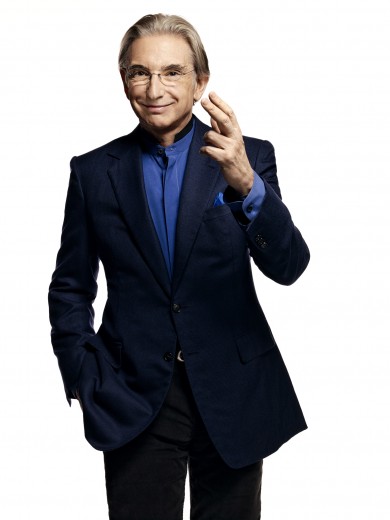MTT, San Francisco Symphony bring polish and vigor to lightish program

Michael Tilson Thomas conducted the San Francisco Symphony Saturday night at the Arsht Center. Photo: Art Streiber
After a gap of 19 years, the San Francisco Symphony returned to Miami Saturday night at the Arsht Center.
The orchestra, under the leadership of music director, Michael Tilson Thomas, has grown in stature since the last time it played here, in particular gaining a reputation for performances of Mahler and contemporary music.
But it was hard to assess the orchestra’s strengths from Saturday’s concert. Strings played in a rich, agile and accurate manner, there were excellent solos from first-chair wind players, and the musicians played with considerable vigor and enthusiasm for an ensemble playing the last concert of what must have been a grueling national tour. But the program of Liszt, Prokofiev, Samuel Adams and Ravel at the Arsht Center was a lightish one that didn’t contain the sort of major symphonic work that would really show what an orchestra could do.
The concert opened with a performance of Liszt’s Mephisto Waltz No. 1 that was full of nervous energy and brought out the work’s theatrical eeriness. The strange, disjointed theme came off in a boisterous, rhythmically marked manner, with the strings sawing away busily without any loss of tonal refinement. Concertmaster Alexander Barantschik brought a rich, dark tone to his solos.
Gil Shaham was the suave, smooth soloist in Prokofiev’s Violin Concerto No. 2. But suave and smooth will only get you so far in this work. While his playing was technically impeccable, without a trace of effort as he flawlessly zipped through the most difficult passages, the performance lacked force, bite and drama. In his playing of the opening theme and the more lyric one that follows it, he sounded detached, leaving the melodies under-expressed. The spikier passages that followed came off as too pristine, lacking an element of roughness or force.
The second movement was a different story. Here his singing tone, smooth bowing and sense of phrasing fully captured the spirit of a movement that was reminiscent of the soaring violin writing of the 19th century. In the last movement, he again played in too refined a manner, with the ascending passages in the last few minutes lacking drive and power, giving the work a small-scale feel.
After the violin had had its moment in the spotlight, it was time to hear from the automobile brake drum. This piece of equipment formed part of the percussion battery for Samuel Adams’ 2012 work Drift and Providence, co-commissioned by the San Francisco Symphony and New World Symphony.
Despite unusual instruments and the use of electronics, there was nothing gimmicky about the work. Intended to evoke the ocean, it was a slowly moving composition of shifting textures and rapidly developing climaxes, as episodes of uncertainty suddenly resolved themselves into passages of lean tonal clarity. The work was at its best in soft moments, when Adams’ skillful use of basses, rustling notes in the violins and winds created a feeling of immense power, vastness and mystery.
The program closed with Suite No. 2 from Ravel’s Daphnis et Chloé. There was lush playing in strings and winds in Ravel’s languidly sensuous music. But despite the rich orchestral textures, the playing was agile and transparent, with little sense of heaviness. The only exception was a powerful blast of brass in the passage intended to evoke sunrise, which felt jarring and raw rather than climactic.
As an encore, the orchestra performed Grieg’s The Last Spring, a long melody for strings, played with a warm and velvety tone.
Posted in Performances
Leave a Comment
Sun Nov 23, 2014
at 2:02 pm
No Comments






